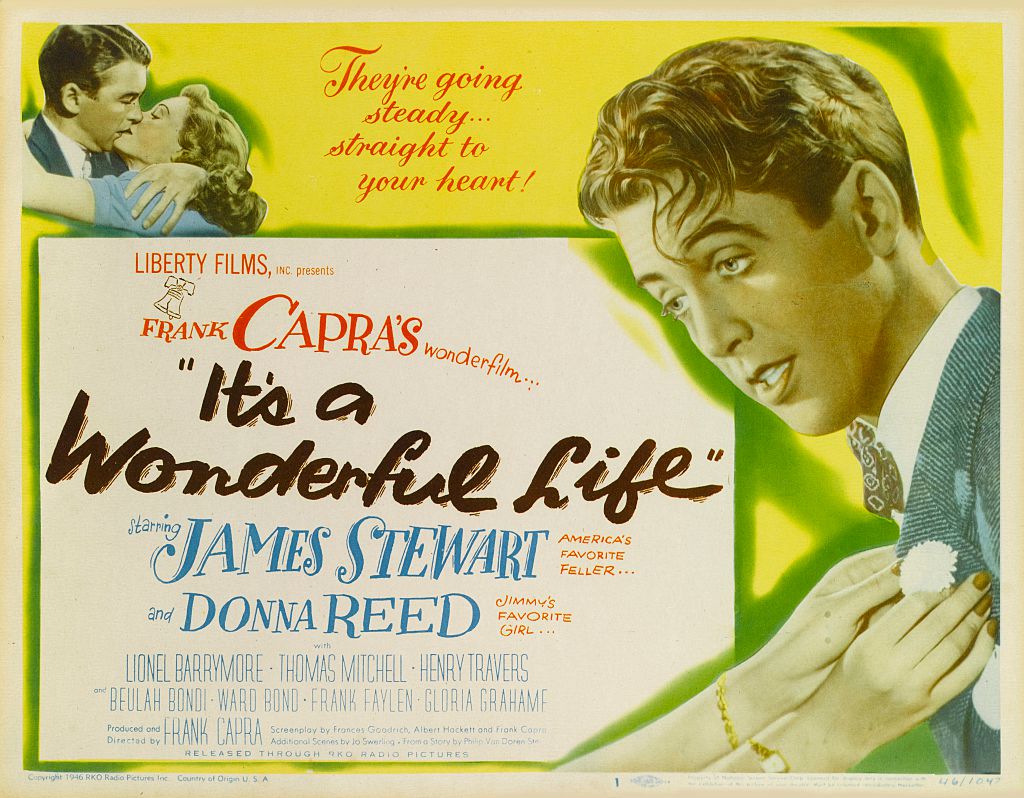The Apollo 8 astronauts worshipped God while circling the moon.
Hallmark-On-Steroids Meets Integralism

John Hughes’s Miracle on 34th Street remake shows that personal religious belief is always political.
I bought a wool coat because of Miracle on 34th Street. The remake is my favorite Christmas movie, and I have a habit of being inspired to mimic aspects of my life after films that I love. All I know is, Dorey Walker is living her best life in that film, in that coat.
Legendary late filmmaker John Hughes captured not only an entire generation’s teenage angst in eighties cinema, making teen flicks an entire genre of film, but also made notable Christmas cult classics like Home Alone and National Lampoon’s Christmas Vacation. Yet, his greatest Christmas masterpiece is the 1994 remake of Miracle on 34th Street, a true modern classic.
What makes this film particularly intriguing is that instead of a heroine, Mary Bailey figure, it is the men who inspire faith in the women, which feels increasingly lacking in today’s world. More importantly it is faith in a particular person.
Kris Kringle is that particular person, a self-sacrificing Santa Claus who encounters Dorey Walker’s daughter, Susan, and discovers she does not believe in him. It then becomes his objective to get Dorey to believe, because “if [he] can’t convince the mother, [he’ll] have no hope in convincing the child.”
“If you can’t believe, if you can’t accept anything on faith, then you’re doomed for a life dominated by doubt.”
That famous line from Kris is the crux of the whole movie—and life, if we’re honest. By using the belief in Santa Claus as a metaphor for the belief in God, Miracle on 34th Street is a story of spiritual credo, about trust in God, which is crucial for the polis (as we eventually see in the judge’s verdict at the end) and for the person (as seen in the characters of Dorey and Susan).
In fact, you could say the judge (portrayed by Robert Prosky, who also played Father Cavanagh in Rudy) was looking for an out to take, a justification under a liberal regime to go full-on integralist in his court decision. He sees the political influence that the greedy corruption run by Mr. Lamberg holds over him and that “money makes the world go round,” a popular theme in film this time of year. He recognizes what’s right but lacks the political will to declare it, hiding behind the law as if his hands are tied. So, it ends up being the reminder of the inscription “In God We Trust” written on the back of a one-dollar bill, issued by the treasury of the United States of America, that gives him permission to rule in favor of justice. As he states in his ruling from the bench,
The federal government puts its trust in God. It does so by faith and faith alone. It’s the will of the people that guides the government and it is and was their collective faith in a greater being that gives cause to this bill’s inscription.
This statement makes obvious what seems so controversial in modern America: that personal religious belief is always political, that a political ruler or polity is always made efficacious by the ruled, and that the common good always rests on a collective belief toward a common end. (One collective belief that was still shared in the 1990s is that truth superseded identity. In reference to doubting Kris’s sanity early on in the film, the judge says, “A man who believes himself to be someone he isn’t, is, by definition, disturbed.” Could a judge say that in 2023?)
Overall, the film’s plot is a bit familiar: a beautiful but cynical single mom with a fabulous wardrobe, a handsome and brilliant lawyer who happens to be a near-perfect guy, a store to save, and a morally upright English Santa Claus who also plays matchmaker. The aesthetic is beautiful, remnants of old checker cabs give New York City that classy and iconic look. The passing frames of superbly well-dressed adults and children make you start to wonder, is this really 1994 or 1944? Throw in a romantic nuptial elopement after midnight mass, and it’s basically a Hallmark film on steroids.
But Miracle on 34th Street is not a Hallmark movie. One of the surest ways to tell is the child actors are actually adorable and phenomenally talented. Mara Wilson arguably carries the entire film. The “four-foot tall, brown hair, talks like she’s sixty-four years old” Susan is what you would want your little girl to be like: smart, with a high vocabulary, sense of humor, and impeccable manners.
But Susan’s character is more than cute and precocious—she is us. She wants to believe, but her mother (who could also be a stand in for the world) clouds her with doubt. Susan has a dream of having a house for a home, a brother, and a dad—things in life her mother can’t buy her. Her dream house is her mother’s company’s “catalog house,” and the man she wants for a father, Mr. Bedford, lives across the hall. In the early part of the film, you can see her try to make one of her dreams happen, always teasing and instigating the romance she can see between her mom and Mr. Bedford. Her dreams are within reach. But she can also feel their weight, so she places them in her hope chest.
And it is not until Mr. Kringle, babysitting one night, asks her what she wants for Christmas that she delves inside her hope chest and reveals her heart’s desire, her true Christmas wish to the one that, if he’s the “real thing,” “he’d be able to get them for her, if not he’s just a nice man like [her] mother says.”
Mr. Kringle comes back to warn that “just because every child doesn’t get his or her wish doesn’t mean there’s not a Santa Claus.” But, like the honest child Susan is, she pushes back and challenges: “If Santa really can make reindeer fly and go up and down people’s chimneys and make millions of toys and fly all around the world in one night, he could get someone a house and a brother…and a dad. Right?” Susan finally asks something big of Mr. Kringle, but there’s still a part of her that doesn’t believe.
Ironically, it is this night that she asks that part of her dream could have happened, but it doesn’t, because the timing wasn’t right. Her mother wasn’t ready. Ultimately, neither of them had real faith yet.
However, once Susan starts to believe in Mr. Kringle, she starts to believe he’ll get her what she wants for Christmas. Near the end of the film, she’s anticipating a moment to serve as a sign that it will happen, even up to the eleventh hour. Disappointed by what looks like utter defeat, trusting in the sign rather than the giver of the gift, Mr. Kringle gives her a God-wink, signaling “it’s going to happen, keep the faith.” Very much like the season of Advent, she must endure the agonizing wait in expected hope for what she’s asked.
In the last scene, after receiving two of the three things she asked for, concluding that Kris is the real deal and worthy of belief, that he is who he says he is, Susan asks her parents if Mr. Kringle will still get her the last thing, if she can still trust him. “I guess I’ll just have to wait for it.” And like a good, believing parent trying to instill perseverant faith in their child, her new father declares, “If Kris said he’d get you something, I bet it’s already on its way.”
The American Mind presents a range of perspectives. Views are writers’ own and do not necessarily represent those of The Claremont Institute.
The American Mind is a publication of the Claremont Institute, a non-profit 501(c)(3) organization, dedicated to restoring the principles of the American Founding to their rightful, preeminent authority in our national life. Interested in supporting our work? Gifts to the Claremont Institute are tax-deductible.
Christians must reclaim a robust understanding of Christianity’s role in public life.
A little less conversation, a little more action.
When politics trumps basic humanity.
The Marvel Studios propaganda mill switches teams.
Feel-good platitudes aren’t enough to sustain a healthy society.






